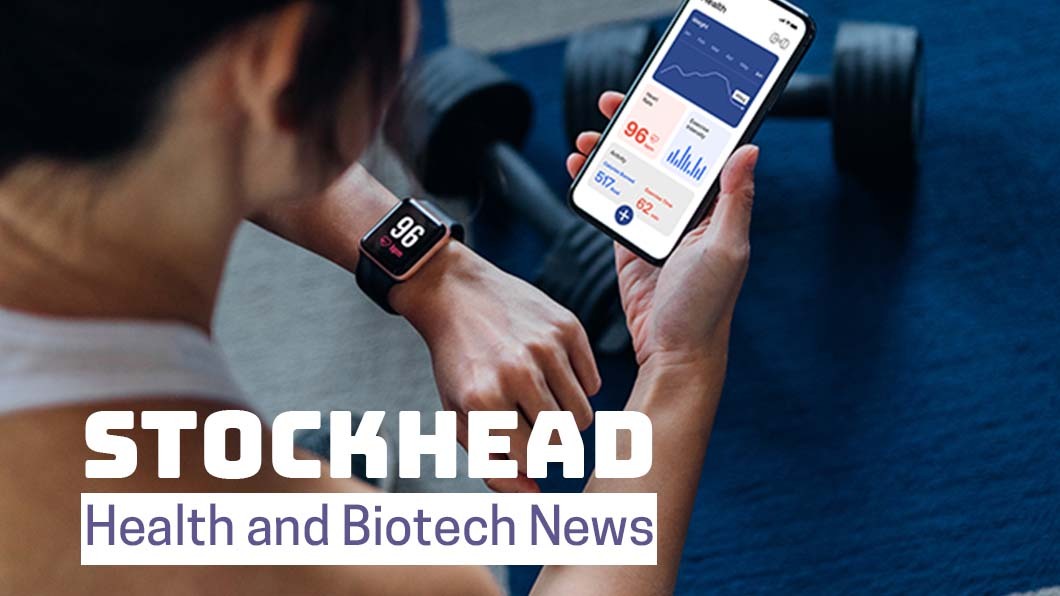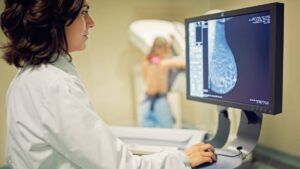Dr Boreham’s Crucible: Picture this – a growth stock that makes money, pays divvies and accrues cash

Pic: Oscar Wong / Moment via Getty Images
If the Melbourne-based, US-focused radiology digital imaging house is running out of steam after an enormous five years of growth, co-founder and CEO Dr Sam Hupert isn’t letting on.
These days the company – Pro Medicus (ASX:PME) commands a valuation of just under $4.7 billion and is the fourth biggest ASX-listed life sciences play behind the ‘big three’ of CSL, Cochlear and Resmed.
Dr Hupert says the last 18 months have been the busiest ever for the company, “not just in terms of sales, but implementation”.
In the equal biggest deal to date, last October, the company signed up Novant Health for a $40 million contract over seven years. The transaction expands the company’s presence away from the traditional ‘sandstone’ colleges and into the non-academic sector.
In early April, the company signed up North Virginian not-for-profit Inova Health in a $32 million deal over eight years.
Renewed contracts include Europe’s Allegheny Healthy, New York University’s health network, the Baltimore and Washington-based Medstar and the Utah-based Intermountain.
“The market is very active at the moment, there’s an increased cadence with RFPs (requests for proposals),” Dr Hupert says.
“A lot of them require the option to work in the [internet] cloud or are mandating the cloud, which favors us.”
Image-in that
Pro Medicus provides diagnostic imaging, practice management and image archiving software to radiology practices.
The company was founded by Melbourne general practitioner Dr Hupert and his technologist friend Anthony Hall in 1983. Back then, ‘digital deployment’ referred to rude hand gestures from drivers of beaten-up Kingswood panel vans, rather than technological revolution.
The cloud, of course, was that puffy thing in the sky leading to precipitation and dongles were … just plain rude.
The company is mainly involved in the ‘viewing’ part of the chain: enabling clinicians to call up the images quickly and make better use of them.
Pro Medicus has surfed the burgeoning data requirements for modern imaging techniques such as high-density multi-slice CT (computed tomography) scans, 3-dimensional breast ‘tomo’-synthesis, opto-acoustic breast ultrasounds and total body scans.
The company’s key products are Visage RIS (as in radiology information system) and the cornerstone Visage 7 (enabling users to consolidate information requiring multiple views into a customised single platform).
The image storage tool Visage Open Archive was introduced in 2017, with Visage Workflow Management emerging in 2020.
In 2019, Pro Medicus acquired the California based Visage Imaging for a knock-down $5 million. Then a leader in digital imaging, Visage Imaging otherwise was an unwanted life sciences offshoot of the Nasdaq-listed Mercury Computer Systems.
Executed during the global financial crisis, this acquisition turned out to be both a bargain and a company maker, as the Visage products are core to the company’s offerings.
Along the way, Pro Medicus signed up the Mayo Clinic, the Connecticut-based Yale New Haven Health, North Carolina’s Duke Health and Partners Healthcare, Massachusetts’ largest health system that includes the Harvard Medical School’s Massachusetts General Hospital.
Amassing firepower for the battle of the gigabytes
Dr Hupert says the computer “firepower” (data) required for computed tomography (CT) and magnetic resonance imaging (MRI) is increasing all the time.
“The best analogy is consumer [digital] photography,” he says. “I remember the days when three megabits was pretty good, now it’s in the 20s and 30s.”
Similarly, a decent CT scan used to require 150 to 300 megabytes but now the requirement is measured in gigabytes.
“They take 5,000 slices and each one is half a megabyte. It’s not just the resolution, the volume of images is growing as well,” he says.
“Much bigger datasets are becoming the norm. The traditional way of moving images around, compressing them and uncompressing them and manipulating them at a work station is starting to crack at the seams.”
The other key driver of modern imaging is the migration to the cloud, which has not been as rapid in the rarefied radiology world as one might expect. That said, the last five Pro Medicus deals were all internet cloud-based.
Antipodean upstart snares leading US market share
Dr Hupert estimates that Pro Medicus has the lion’s share of the traditional academic market, having signed up nine of the top 20 US institutions (‘top’ is determined not just by size, but perceived quality).
“We have more than double [the market share] of our nearest competitor,” he says. “Given we have only been in that market for six or seven years, no-one has been able to do that.”
The company is also making inroads into what our American friends call IDNs, or integrated delivery networks. These are non-academic, non-teaching hospital chains, generally not-for-profit.
Intermountain and Novant Health fit this category.
Dr Hupert notes that about 500 million tests are done in the US annually, which come to think of it is 1.5 for every man, woman and child.
He estimates Pro Medicus has around six percent of that broader market. “That doesn’t sound too much, but not too many players have been able to achieve that to date.”
Sizing up the rivals
Traditionally, Dr Hupert says, the company’s competition came from the equipment vendors such as GE Health, Siemens and Philips.
When camera film became redundant, the likes of Agfa, Fujifilm and Carestream also sashayed into the sector.
Dr Hupert claims these providers are losing market share at the expense of up-and-coming independent providers steeped in the digital way of doing things. Many of these providers are being subsumed by private equity ‘roll up’ plays.
The internet cloud allows Pro Medicus to sell to a Mayo or a five-person radiology clinic in Airport West (an unprepossessing Melbourne suburb proximate to Essendon Airport).
“Cloud has made a huge difference. If a five-person practice had to buy its own hardware and organise a data centre and hire a data manager, it would be too much,” he says.
“The beauty of the cloud is that it matches our billing model by which you only pay for what you use.”
Naturally, Pro Medicus has a weather eye on ASX counterpart Mach 7, which is based in Burlington, Virginia.
With a far more modest $150 million market capitalisation, Mach 7 services smaller hospitals and focuses on image storage (archiving) rather than viewing.
Intriguingly, Mach 7 is chaired by David Chambers, who ran Pro Medicus for a while.
“We tend to swim in different ponds,” Dr Hupert says.
Who’s best in breast?
Pro Medicus also overlaps with the Kiwi based, ASX-listed Volpara Health Technologies, which specialises in imaging interpretations and practice management for breast cancer clinics.
Volpara has a sharper focus on breast density imaging and reporting.
In conjunction with Yale’s breast imaging centre, Pro Medicus mucked about with its own breast-imaging platform.
“It worked so well that we got it approved by the [US Food and Drug Administration] and got it commercialised,” he says.
Dr Hupert envisages expanding this capacity to “all the major body parts”, most likely in joint developments with the Mayos and Yales of the world.
He notes that tumors are not “uniform round little golf balls or marbles” – they are more unwieldy with tissue growing in all directions. Artificial intelligence (AI) enables these tumors to be better segregated from the surrounding tissue and viewed in glorious 3D.
“AI is not as ingrained in radiology as people would believe, it’s just emerging,” he says.
Coping with Covid
On balance, The Plague was helpful for Pro Medicus because it sheeted home the applicability of its cloud-based products for remote working.
“The key selling point of software is that you can work remotely,” Dr Hupert says.
In March and April 2020, examination volumes dropped “precipitously”, but was short lived. “In May to July 2020, we saw volumes return and they were back to near normal by the end of the year,” he says.
Now, in some areas, volumes are higher, such as for breast examinations.
The company is buffered from the risk of a sharp downturn because its contracts are based on the take-or-pay principle.
Typically, a new client must pay for 80 per cent of the number of exams carried out in the previous year and then pays extra for usage beyond this level.
Dr Hupert says no client dipped below these minimums.
Finances and performance
Pro Medicus reported a net profit of $20.6 million for the first (December 2021) half, up 53 per cent, on a 41 per cent revenue boost to $44.7 million.
Investors were rewarded with a 10 cents per share dividend, fully franked, up 43 per cent.
Revenue wise, 85 per cent of turnover derived from the US, where transaction (examination) revenues rose 37 per cent as new customers came on stream.
The company’s profit margin increased to 65 per cent on an underlying earnings basis, having risen from 51 per cent to 59 per cent in the 2020-’21 year.
This was somewhat unexpected, given costs rebounded from the Covid era when they were constrained because no one was travelling anywhere.
“So even though our cost base has increased in line with our projections, our revenue growth has outstripped that,” Dr Hupert says.
Unusually, the debt-free Pro Medicus has not done a capital raising since its initial public offer and seeing the company is accruing cash, it doesn’t expect to do so.
Pro Medicus shares peaked at $70 a share in late August 2021, valuing the company at a hefty $7.3 billion. The shares attained a 12-month low of $39 in mid-May of that year.
Pro Medicus (ASX:PME) share price today:
Dr Boreham’s diagnosis:
While Pro Medicus shares have declined about 20 per cent over the last six months and three per cent year-on-year, they’ve fared better than most other US-oriented life sciences stocks.
“We are an unusual mix but that’s always been part of our DNA,” Dr Hupert says.
“We are a hybrid in that we’re a growth stock but we make money, pay dividends and accrue cash.
“Our industry is insulated from interest rates and inflation because it is largely non-discretionary. Our clients are incredibly well-funded and we don’t have any debt.”
The tougher funding conditions also means that valuations in the sector are waning, posing the opportunity for the company to engineer some bolt-on acquisitions.
When we last covered Pro Medicus in May 2019, we opined the valuation looked stretched given the stock traded on an earnings-multiple of 110 times.
Well guess, what? The company still trades on a similar earnings-multiple, yet shareholders have pocketed handy gains indeed – given the company back then was valued at a ’mere’ $2 billion.
The current valuation looks more modest given the $360 million of contracted revenue already locked in over the next five years – with the probability of more fresh deals to come.
Disclosure: Dr Boreham is not a qualified medical practitioner and does not possess a doctorate of any sort. He was certainly not smart enough to buy Pro Medicus shares at 50 cents, which he reminds himself before his daily descent down the salt mine.
This column first appeared in Biotech Daily
Related Topics

UNLOCK INSIGHTS
Discover the untold stories of emerging ASX stocks.
Daily news and expert analysis, it's free to subscribe.
By proceeding, you confirm you understand that we handle personal information in accordance with our Privacy Policy.








